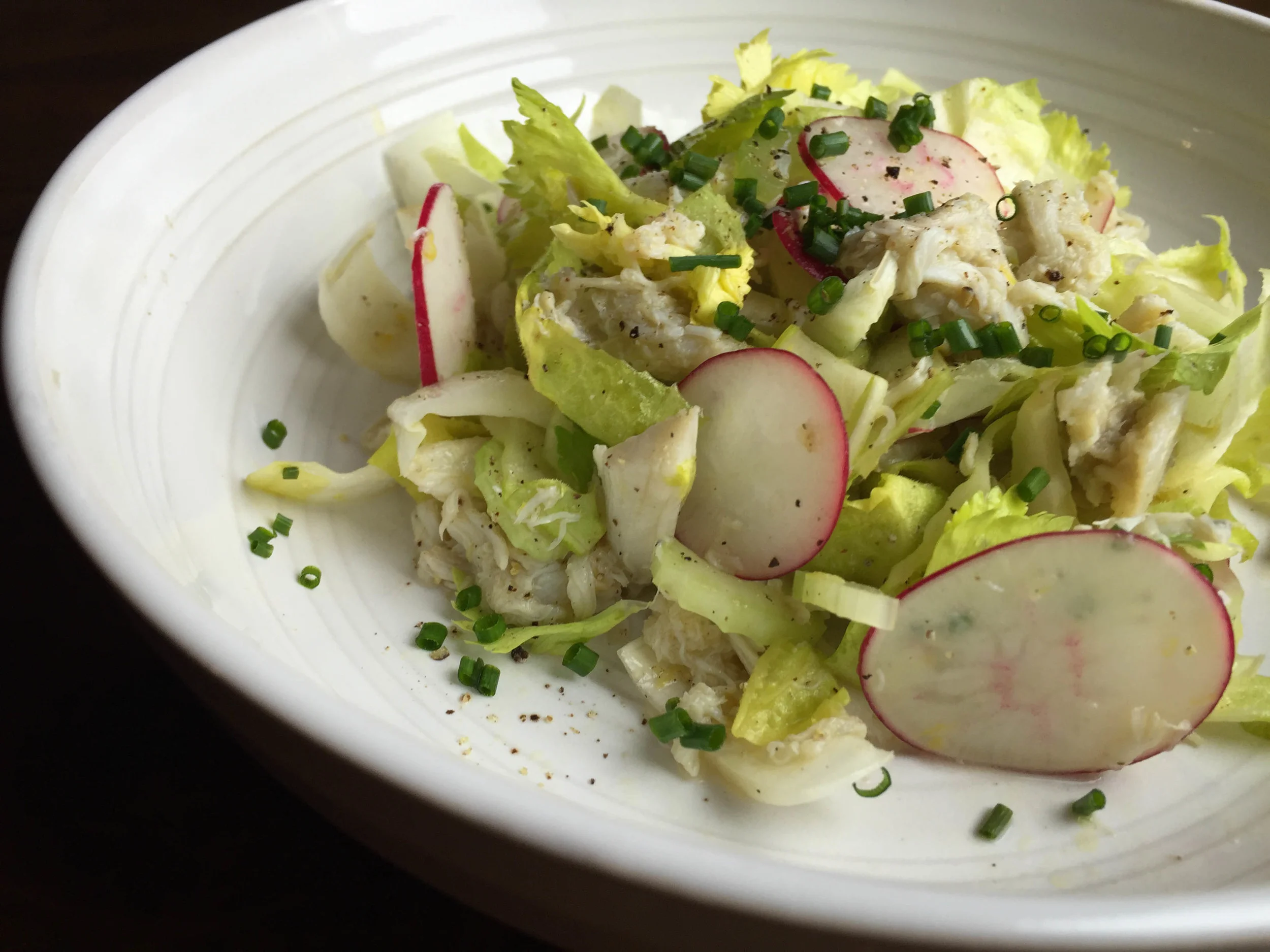Seared barramundi with gribiche
How about an easy-to-make sauce that can turn the simplest grilled fish into a dazzling dinner party dish? Or that can dress up boiled or roasted asparagus? Or that you can add to sliced boiled potatoes to turn them into the snazziest potato salad ever?
That's the beauty of sauce gribiche: It can make every simple old thing deliciously new again.
Poached leeks. Poached chicken. Boiled shrimp. Cold cracked crab. Fried or pan-fried soft shell crabs. Steamed mussels. Thick roasted slices of cauliflower. Sliced rare roast beef or lamb or ham. The possibilities are, you know, endless.
Traditional sauce gribiche is a mayonnaise made with hard-boiled egg yolks instead of raw ones, dressed up with herbs, capers and cornichons. (It's French, which is why it's called "sauce gribiche" instead of "gribiche sauce.") That old-style version is just as tedious to make as mayo, too, as you have to dribble in the oil while you constantly whisk, being careful not to let it "break." (Don't worry, though: Our new-wave version is super easy!)
The traditional style of gribiche bears little resemblance visually to the new-wave versions turning up in restaurants these days, though the ingredients are the same. The reason? Instead of whisking the ingredients into an emulsion, you quickly stir everything together. Using soft-boiled eggs instead of hard-boiled ones, and lots of herbs, brings it irresistibly into the 21st century in terms of looks and taste.
Grilled jumbo asparagus with gribiche and bottarga from Gjelina: Cooking from Venice, California
I stumbled on one as I flipped through Gjelina: Cooking from Venice, California – the new book from chef Travis Lett. Lett uses it to sauce jumbo asparagus that he first parboils, then grills; the dish is finished with lots of grated bottarga, dried cured mullet roe. I love bottarga, and I happened to have some in my fridge, so I made it – and loved it. (Note: in case you happen to make it, boil the asparagus longer than he tells you, or it will be crunchy-hard. Also, I substituted panko for the garlic crouton crumbs that added a bunch of extra steps to his recipe, and the panko worked great.) But bottarga is hard to come by, and it's expensive, so before I added it to the dish, I tasted it without. Good, but not great. It wanted a little more zing. I decided to develop a recipe that would be zingy enough to jazz up simple, plain food without the help of bottarga.
I pretty quickly hit upon the answer: cornichons. Traditional gribiches include them, yet Gjelina's did without them (probably they would taste weird with the bottarga). Adding them did the trick: It was much more vibrant. I made a batch and tried that on asparagus I cooked simmered in salted water till tender:
Asparagus with new-wave gribiche
Bingo! This was perfect! I also used it to sauce barramundi, a delicately flavored fish with nice body. I did nothing fancier than put salt and freshly ground black pepper on the fish, and seared it gently in a little olive oil. Wow – it was really good, something I'd happily serve at a dinner party.
Want to try it? Here's the recipe:
Seared barramundi with new-wave sauce gribiche
I didn't stop there. I also found a version in one of my all-time favorite cookbooks, Judy Rodgers' The Zuni Cafe Cookbook. I'll tell you about that – and more about gribiche – in my next post!



















